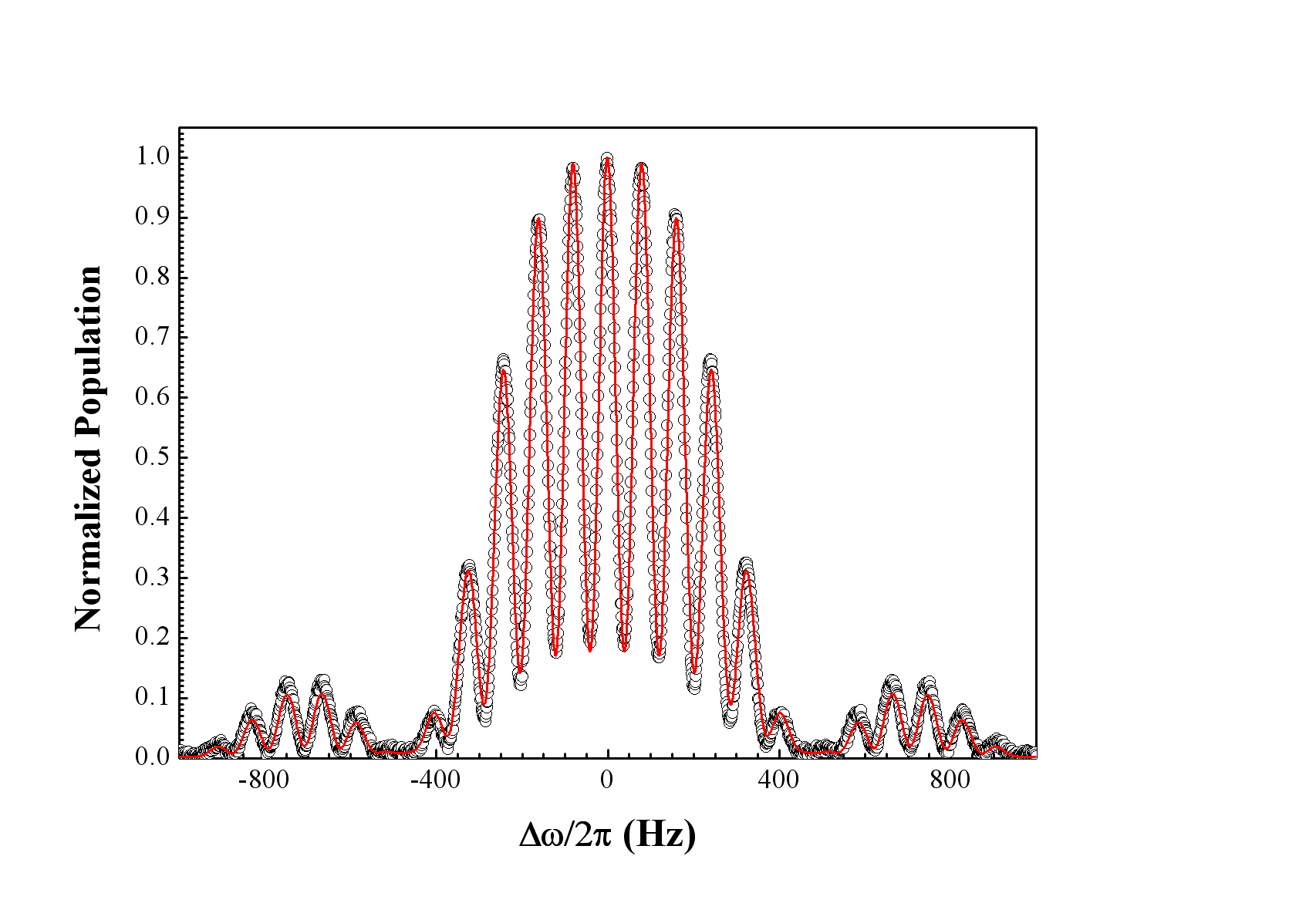Recently, compact cold atom clocks have received much attention due to its potential applications. Shanghai Institute of Optics and Fine Mechanics, Chinese Academy of Sciences (SIOM,CAS) is developing their own compact cold atom clock based on integrating sphere. Typically the cooling of atoms, interrogation and detection for the clocks are placed in same zone. Thus the decoherence during evolution that may be caused by collision between atoms, external electromagnetic field, temperature of atomic samples, and etc. becomes important.
Generally the decoherence time can be described by transverse decay rate, γ, which can be determined by experiments. Researchers at SIOM study the contrast of Ramsey fringes due to γ, and compared with experimental result.
By dealing with optical Bloch equations, the final transition probability of after Ramsey interaction process can be expressed by P(Δω, γ) when considering the transverse decay rate, γ, where Δω is the frequency shift of microwave from the atomic resonance frequency.
Supposing the evolution time T = 10 ms, from equation P(Δω, γ), we can easily get the Ramsey fringes by varying Δω, as shown in Fig. 1.

| Fig. 1. Ramsey fringes for different γ. (a) γ = 0, (b) γ = 30 1/s, (c) γ = 100 1/s, and (d) γ = 200 1/s. Here, bτ = π/2, and T = 10 ms. |
From Fig. 1 we can find that the contrasts of Ramsey fringes are varied with γ. Figure 2 gives fitting of experimental data by equation P(Δω, γ) with appropriate γ. Adjusting γ to fit the experimental Ramsey fringes with theory best gives error of the contrast at 2.6% between measurement and theory, and the fitting of experimental data for both T = 5 ms and T = 10 ms gives the γ = 30.5 s-1, which is the own property of our cold atom system.


| Fig. 2. Fitting of experimental data by Eq. (36) with T = 5 ms (above) and T = 10 ms (bottom). Circles are experimental data, and curves are simulation by equaiton P(Δω,γ) with appropriate γ. Here bτ = π/2. |
This result is published in Chin. Opt. Lett., 10(10), 2012.
This work is supported by the National Nature Science Foundation of China under Grant No. 11074262, 10874193 and 11034008.

